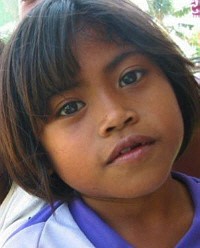The Sumba (Tau Humba) are an Austronesian people concentrated on Sumba Island in eastern Indonesia. Their society developed a distinctive culture shaped by dry-season savanna, hilltop villages, and long endurance with limited agricultural seasons.
Interaction with outsiders began centuries ago through trade (including sandalwood) and intensified with Dutch colonial presence and Christian mission work from the late 19th and early 20th centuries. Today traditional Sumbanese institutions and worldview (Marapu) continue to coexist with widespread forms of Christianity introduced by missionaries over the past century.
Most Sumbanese earn their living through subsistence farming, raising a mixture of crops (rice, tubers, corn) and livestock such as cattle, buffalo, goats, chickens, and the locally prized Sumba horses. Villages are often built on hills with defensive thorn barriers, and the iconic peaked clan houses (uma mbatangu) are both practical dwellings and sacred spaces.
Weaving (ikat textiles), wood and stone carving, and ritual performances such as the pasola horse festival remain important social and economic activities, and tourism focused on these traditions has increased in recent years. Seasonal droughts, limited infrastructure, and economic pressures influence migration and livelihoods across the island.
The traditional Marapu religion—ancestor veneration, spirit belief, and ritual practice—forms the backbone of Sumbanese cultural identity. Marapu is expressed in clan rituals, megalithic tombs, sacred house architecture, and festivals that are intended to secure fertility, prosperity, and social order.
Christianity (both Protestant and Catholic) has grown substantially since the arrival of missionaries in the late 19th and early 20th centuries; in many communities Christian affiliation exists alongside continuing Marapu practice, producing a range from nominal syncretism to committed Christian faith. Islamic presence is comparatively limited on the island.
Sumba needs sustained, culturally sensitive discipleship that distinguishes biblical faith from syncretic ritual practices while acknowledging Sumbanese values and social structures. The people need trained local Christian leaders who understand Marapu contexts and can teach Scripture in ways that address ancestral fears, death rituals, and community identity. There is a need for Christian resources in local languages and culturally adapted materials for churches, schools, and youth ministries.
Sumba needs churches that model practical service—addressing hunger, health, education, and livelihood—so that the gospel demonstrates both word and deed. Finally, there is a need for partnerships that support holistic development (including sustainable agriculture, health access, and preservation of beneficial cultural crafts like ikat weaving) in ways that strengthen rather than displace local leadership.
Pray for spiritual breakthrough among families who continue to practice Marapu, that the Holy Spirit would open hearts to the gospel and bring clarity where ritual and Scripture conflict.
Pray for a new generation of Sumbanese Christian leaders, elders, and Bible teachers who are fluent in local languages and able to disciple people in culturally relevant ways.
Pray for churches on Sumba to grow in practical expressions of the gospel—meeting needs in health, food security, and education—so the local witness is credible and compassionate.
Pray for protection and wisdom for missionaries and local partners as they navigate syncretism, preserve worthy elements of Sumbanese culture (such as weaving), and proclaim Christ with love, humility, and respect to those who need hope.
Pray that the Sumba Christians would graciously and boldly preach the gospel and make disciples of their own people, and the world around them.
Scripture Prayers for the Sumba in Indonesia.
Sumba people. Wikipedia (Sumba people) — overview of language, religion, and culture.
Forth, Gregory L. Rindi: An Ethnographic Study of a Traditional Domain in Eastern Sumba. KITLV / academic studies on Sumbanese society and adat.
Jan Sihar Aritonang & Karel A. Steenbrink. A History of Christianity in Indonesia. Brill — missionary history and Christian expansion on Sumba.
"Sumba Culture Guide | Traditions, Festivals & Heritage of the Island." SumbaGuide.com — contemporary cultural practices, pasola, and ikat weaving.
The Guardian, "Sumbas sandalwood ponies" (feature on Sumba cultural life, pasola festival, and modern pressures) — reporting on horses, pasola, and tourism impacts.
ExploreSumba / tourism and culture pages (articles on ikat weaving, pasola festivals, and traditional houses) — practical descriptions of crafts and festivals.
| Profile Source: Joshua Project |










